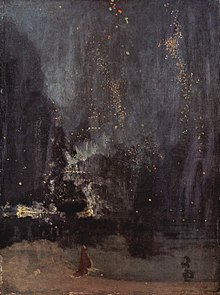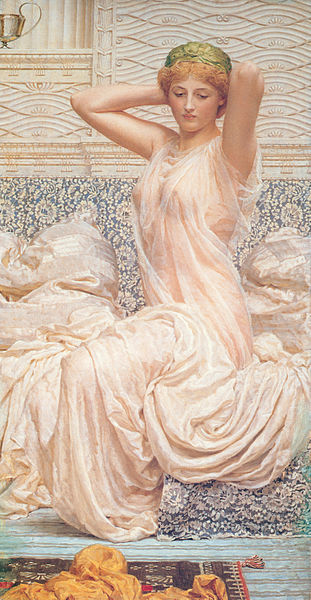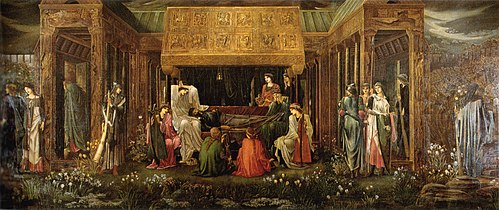Aestheticism, late 19th-century European arts movement which centred on the doctrine that art exists for the sake of its beauty alone, and that it need serve no political, didactic, or other purpose.
In doing a blog that explores the cultures of the Victorian and Weimar eras, one thing that becomes interesting is when one movement in one era is a direct rebellion against one in another.
In this case, Bauhaus, featured in yesterday’s post, was in direct rebellion to its parents’ generations’ embrace of Aestheticism.

The movement began in the 1860s for a number of reasons. In 1851 England held a World’s Fair, called The Great Exhibition. The art and philosophies of art displayed there were things this new movement was rebelling against (and the embrace of industrialism is one of the things Bauhaus, in rebellion to Aestheticism would re-embrace a generation later).
In addition, the most renowned art critic of the day, John Ruskin pushed heavily for art which not only imitated nature but should be inherently useful and uplift morality.
Victorian society was also obsessed in general with moral issues being stressed at every occasion and turn, and was obsessed with practicality over whimsicality.

Aestheticism arose as an antithesis to these things. Additionally, in 1873, the book The Renaissance, by Walter Pater was published, which became a darling of the burgeoning movement. It’s a vision of life as pure sensual experience and a manifesto for hedonism.

‘Pater concludes that the purpose of life is to pursue sensual beauty and live in the moment. “To burn always with this hard, gem-like flame, to maintain this ecstasy, is success in life,” he declares.’ (jonathon jones)
It is from the Aesthetics that we get the phrase “Art for art’s sake”. Indeed, it was their battle cry. Beauty can exist just… to be beautiful. Not everything needs to be obsessed with purpose and lessons and morals. Beauty is a lesson in and of itself.

Artists, poets, sculptors, architects, craftsmen all joined in.

Its practitioners included artists like Albert Moore and James Whistler (of Whistler’s Mother fame). In literature Oscar Wilde (worth a post in and of himself) was the most renowned, as was poet Algernon Charles Swinburne. Kate Vaughan the dancer and her famous Skirt Dance was applauded.

It was decadent. It abhorred sentimentality. It accepted homosexuality.
Aestheticism decried art being limited to paintings and sculptures in a falsely valued art market. It was for everywhere, our homes, our buildings, all aspects of our lives, and thus some of the elaborately designed interiors we associate with the Victorian era were born.

Wallpaper. You want to know where flowery wallpaper came from? Look no further.

The movement’s mission, to make art and beauty infiltrate every aspect of life, with a dash of hedonism is certainly more my style, although i don’t really love much of it except for Whistler.
One last thing to consider is that Aestheticism was also in contrast to Positivism, that is, the notion that rationalism and science are our best methods of discovering and interacting with the world. It was concerned with the experience of one’s existence. This Dionysian vs. Apollonian contrast never, ever expires. The entirety of the human journey since Classical times explores this debate unceasingly.

One thought on “Aestheticism”